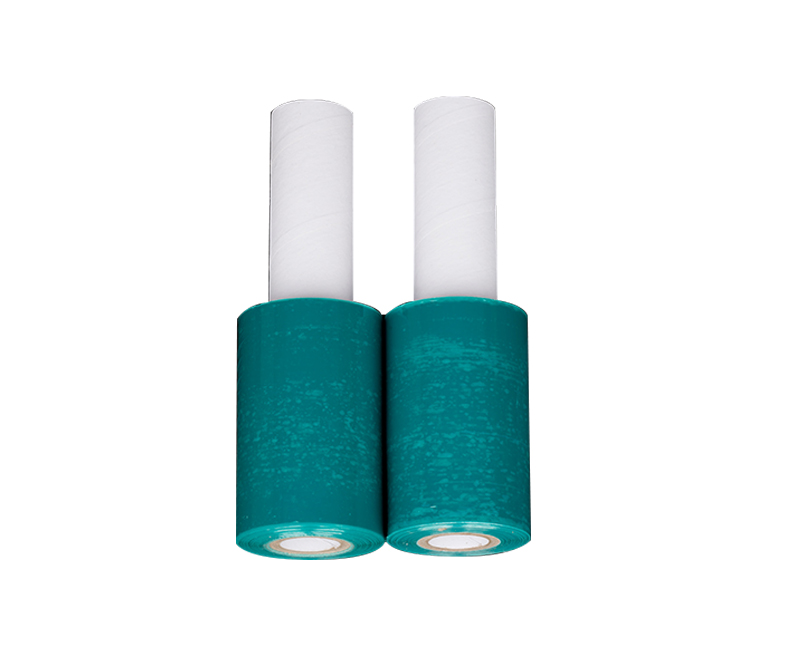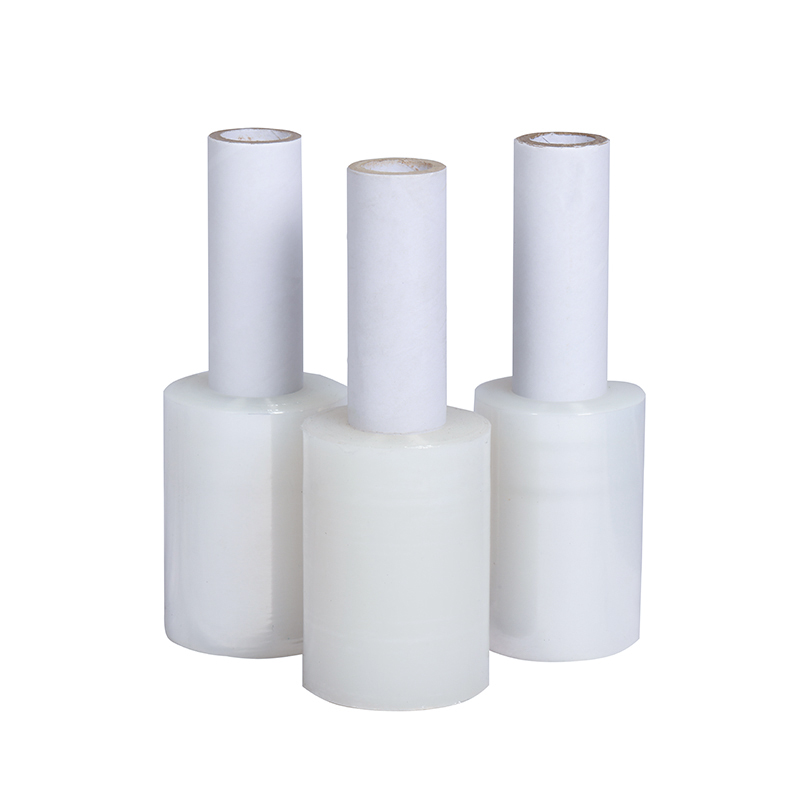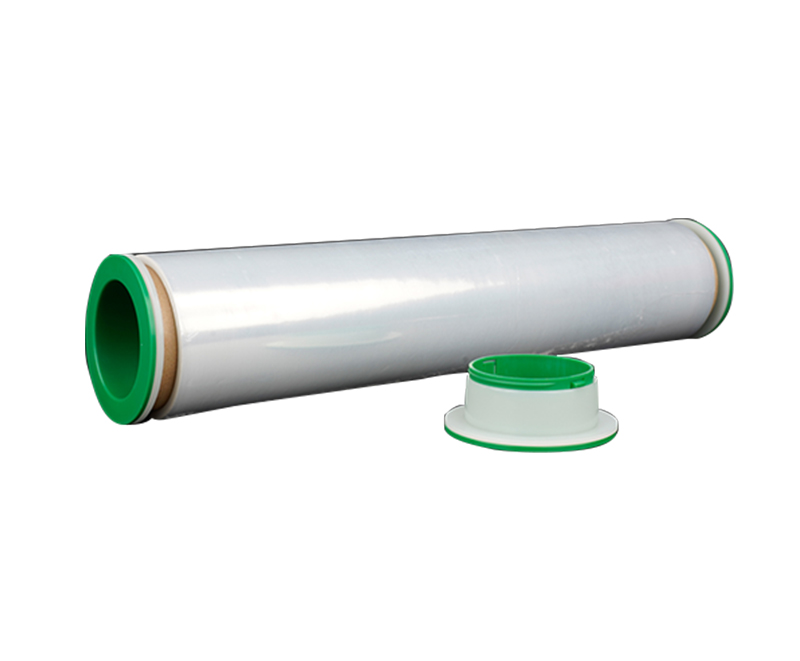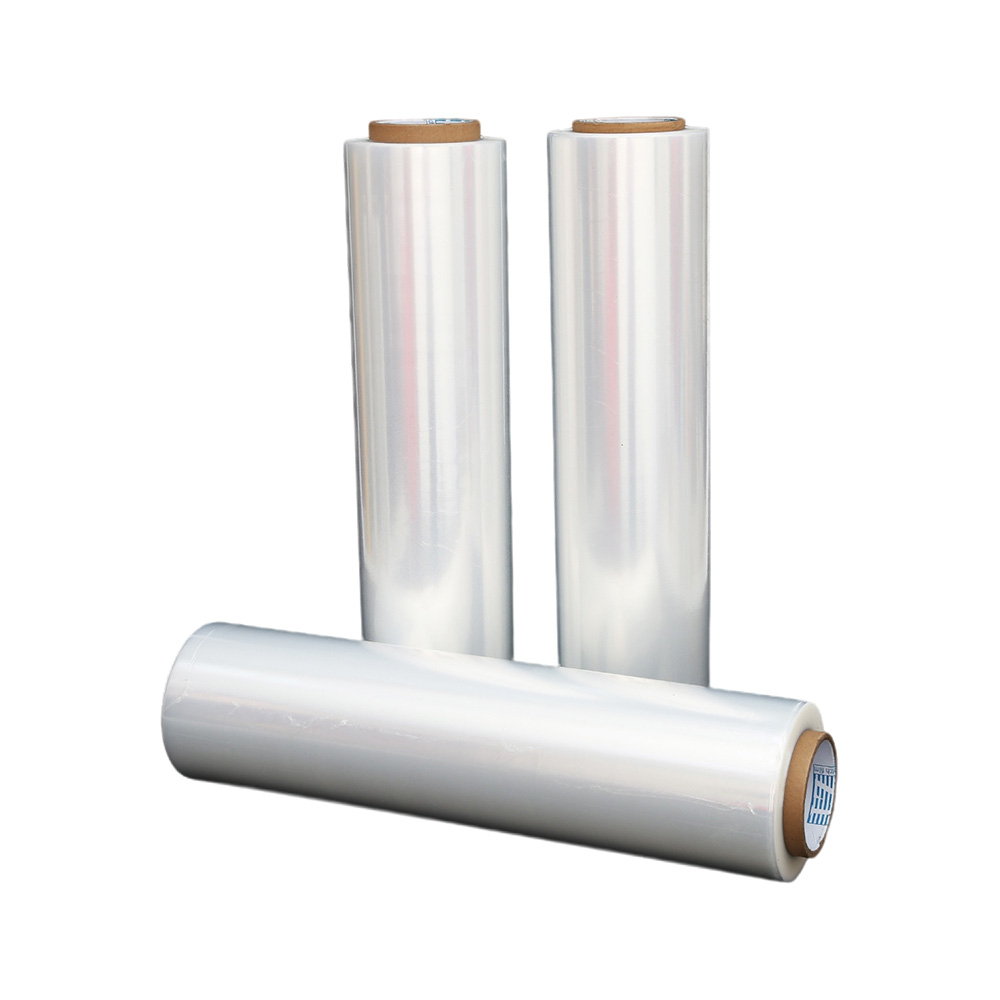How to Use Stretch Film: A Comprehensive Guide
Source: How to Use Stretch Film: A Comprehensive GuideTime:2023-05-10Visitors:
Introduction
In today's fast-paced world of packaging and logistics, the stretch film plays a crucial role in ensuring the safe transportation and storage of goods. This versatile and cost-effective material provides stability, protection, and tamper resistance to various products. However, for those unfamiliar with stretch film, understanding its purpose and using it effectively can take time and effort. This article addresses the common questions and concerns of users who need to buy and utilize stretch films, providing valuable insights and guidance..
I.The Importance of Stretch Film
The stretch film serves multiple purposes in the packaging industry. Its primary function is to secure and stabilize items during transit, preventing them from shifting or becoming damaged. By tightly wrapping pallets or individual products, stretch film minimizes the risk of breakage, reduces product loss, and enhances overall safety. Additionally, stretch film acts as a barrier against moisture, dust, and other external elements, ensuring the integrity and cleanliness of the packaged goods.Understanding Stretch Film
Before delving into the details of using stretch film, it's essential to grasp the fundamental aspects of this material. Stretch film, often known as cling film, is a type of plastic film that is both stretchable and wrappable. It is available in various types, such as hand and machine stretch films, each catering to specific packaging requirements. Understanding the characteristics and properties of different stretch films allows users to make informed choices based on their unique needs.Addressing User Needs and Concerns
As a user contemplating the purchase of stretch film, you may have specific concerns or questions. Here, we address some common queries to help you make informed decisions.1.What are the factors to consider when selecting a stretch film?
We explore crucial considerations such as load weight, stability, and transportation conditions. These factors influence the choice of film thickness, width, and stretch capacity.2.Which stretch film size is suitable for my application?
We offer advice on selecting the suitable dimensions according on the size and weight of your load, ensuring excellent coverage and protection.3.What are the different types of stretch film available?
We explain the distinctions between cast and blown stretch films, highlighting their benefits and best applications.4.How can I find reliable stretch film suppliers?
We offer guidance on researching and vetting suppliers, emphasizing the importance of quality, consistency, and customer service.By addressing these user needs and concerns, Our ultimate goal is to provide you with all the information you need to confidently shop for and deploy stretch film.
II.Understanding Stretch Film: Essential Information for Users
The stretch film is vital in securing and protecting goods during transit and storage in packaging and logistics. To effectively utilize stretch film, it is essential to have a comprehensive understanding of its definition, basic principles, various types, and the factors to consider when selecting the most suitable stretch film for your needs.1. Definition and Basic Principles of Stretch Film
Polyethylene stretch film, often known as stretch wrap or pallet wrap, is a flexible plastic film used for securing or protecting loads. Its primary purpose is to tightly wrap around products, providing stability, protection, and containment. The basic principle behind stretch film lies in its ability to stretch and recover, conforming closely to the shape of the wrapped items.During the application process, the film is stretched either manually or mechanically. This pulling action causes the film to become thinner and longer, allowing it to wrap tightly around the products. Once the stretching force is released, the film recovers and exerts constant pressure on the load, holding it securely together.
2. Types and Features of Stretch Film
- Hand Stretch Film: Hand stretch film is designed for manual application. It is suitable for smaller loads, irregularly shaped items, and requiring precision wrapping. Hand stretch film comes in various thicknesses and widths, allowing users to choose the most appropriate option.
- Machine Stretch Film: Machine stretch film is specifically designed for use with stretch wrapping machines. It offers high-speed wrapping capabilities and is ideal for larger volumes and consistent wrapping quality. Machine stretch film is available in different gauges and widths, catering to various machine specifications and load requirements.
- Pre-Stretched Film: Pre-stretched film undergoes a specialized manufacturing process where it is stretched before being wound onto the roll. This type of film requires less force during the application, reducing operator fatigue. The pre-stretched film offers improved load containment, reduces film waste, and enhances efficiency.
- Colored Film: The colored stretch film provides an additional layer of identification and security for packaged goods. It is commonly used when differentiating between loads or indicating special handling requirements are necessary.
3. Factors to Consider When Selecting Stretch Film
Load Characteristics: Consider the size, weight, shape, and stability of the load. Heavier or irregularly shaped shipments may require thicker and stronger stretch film to ensure optimal containment and protection.- Environmental Conditions: Evaluate the transportation and storage environment. Factors such as temperature, humidity, and exposure to sunlight or UV radiation can impact the performance of the stretch film. Choose a movie that offers suitable resistance to these conditions.
- Application Method: Determine whether the stretch film will be applied manually or with the assistance of a machine. This influences the selection of the appropriate film type and size, ensuring compatibility with the application process.
- Cost and Efficiency: Strike a balance between the cost of the stretch film and its performance. Consider the level of protection required for the load and aim to maximize efficiency by minimizing film waste and optimizing usage.
By considering these factors, users can make informed decisions when selecting the most suitable stretch film for their packaging requirements. This ensures secure and effective load containment, minimizing the risk of damage during transportation and storage.
III.Purchasing Guide: Selecting the Right Stretch Film
Choosing the appropriate stretch film for your packaging needs is crucial to ensure your products safe and secure transportation. This purchasing guide provides valuable insights and guidance to help you make informed decisions when buying stretch films. You can optimize your stretch film selection process by understanding your usage requirements, selecting the right size and thickness, considering the film's material and characteristics, and finding reliable suppliers.1. Understanding Usage Requirements and Application Scenarios
Before purchasing stretch film, it is essential to have a clear understanding of your specific usage requirements and application scenarios. Consider the following factors:- Load Type and Size: Assess the types and sizes of products you frequently handle. Are they uniform in shape or irregular? This will help determine the appropriate film width and length required for wrapping.
- Load Stability Requirements: Evaluate the level of stability needed during transportation. Are your products fragile or prone to shifting? Understanding this will help you choose the suitable film properties to ensure load containment.
- Handling Process: Consider how the wrapped products will be handled. Will they undergo stacking, long-distance shipping, or high-volume turnover? This information will influence the film's strength and resilience requirements.
2. Selecting the Right Size and Thickness of Stretch Film
Determining the stretch film's appropriate size and thickness is crucial for effective load containment and cost optimization. Consider the following guidelines:- Load Weight: Choose a stretch film with adequate load-bearing capacity. Heavier loads typically require thicker films to withstand the weight and provide sufficient protection.
- Film Width: Select a film width for proper coverage and wrapping efficiency. It should be wide enough to encapsulate the entire load, including any protruding edges or corners.
- Film Length: Determine the required film length based on the size and height of your loads. Sufficient film length ensures proper wrapping and secure containment.
3. Considering Stretch Film Material and Characteristics
The material and characteristics of the stretch film play a vital role in its performance. Consider the following aspects:- Film Material: Evaluate the specific material composition of the stretch film. Standard options include polyethylene (PE) and polypropylene (PP). Each material offers distinct properties and benefits, so choose based on your requirements.
- Stretch and Recovery Properties: Assess the stretchability and recovery capabilities of the film. Look for films with excellent elongation properties and good memory, allowing them to recover and maintain tension around the load.
- Clarity and Visibility: Consider the clarity of the stretch film, especially if you require a visual inspection of packaged goods. Clear movies provide better visibility, while colored films offer additional identification and security benefits.
4. Finding Reliable Suppliers and Brands
Finally, ensure you purchase stretch films from reliable suppliers and brands. Consider the following factors:- Supplier Reputation: Research and assess the reputation and reliability of stretch film suppliers. Find vendors who have a history of satisfying customers with high-quality goods and responsive support.
- Product Quality and Consistency: Ensure the stretch film you purchase meets industry standards for quality and consistency. Look for certifications or quality assurance programs associated with the product.
- Customer Support and Services: Consider suppliers offering excellent customer support and additional technical assistance, training, and customized solutions.
You can find reliable suppliers and brands that meet your stretch film requirements by carefully considering these factors and conducting thorough research.
IV.Using Stretch Film: Step-by-Step Instructions
Stretch film is essential for securely wrapping and protecting your goods during transportation and storage. Following proper steps and techniques is necessary to ensure practical stretch film usage. This section provides a comprehensive guide on using stretch film, including preparation and safety precautions, step-by-step instructions for packaging individual items and bulk loads, and tips for applying stretch film correctly to ensure safety and stability.1. Preparation and Safety Precautions
Before using stretch film, take the following preparatory steps and adhere to safety precautions:- Clear the Workspace: Ensure the workspace is clean and free of debris or obstacles interfering with wrapping.
- Wear Safety Equipment: Wear appropriate personal protective equipment, such as gloves, to protect your hands during wrapping.
- Secure the Load: Ensure the load is stable and properly positioned on a pallet or surface before wrapping. This minimizes the risk of accidents or load shifting.
2. Individual Packaging Items: Steps and Techniques
When packaging individual items with stretch film, follow these steps and techniques:- Start at the Bottom: Begin wrapping the film around the item's base or pallet. Secure the movie by pressing it against the load or using a film tensioner.
- Create a Base Layer: Continue wrapping the film around the load, ensuring each layer slightly overlaps the previous one. Aim for approximately 50% overlap to provide sufficient strength and stability.
- Apply Tension: Apply moderate tension to the film as you wrap, ensuring it is tight enough to secure the load but not so tight that it damages the products.
- Wrap the Top: Once the load is fully wrapped, create a top layer that covers the entire shipment, including any protruding edges. Secure the film by pressing it against the pack or using a tensioner.
3. Packaging Bulk Loads: Steps and Techniques
When packaging bulk loads with stretch film, follow these steps and techniques:1. Prepare the Pallet: Examine the pallet's condition and its ability to bear the load's weight. Pallets should be reinforced if they are damaged or weak.
2. Stabilize the Bottom Layer: Place a layer of stretch film on the pallet before loading the items. This bottom layer provides extra stability and prevents the load from directly contacting the pallet.
3. Arrange the Load: Arrange the items evenly and securely on the pallet, optimizing space utilization and ensuring stability.
4. Start Wrapping: Begin wrapping the stretch film around the base of the load, securing it to the pallet. Apply tension and create multiple layers, gradually increasing the load.
5. Overlap the Film Layers: Aim for approximately 50% overlap between each layer of stretch film to provide optimal load containment and stability.
6. Ensure Even Distribution: Ensure the film is applied evenly across the load, paying attention to the corners and edges. This helps distribute tension and provides uniform stability.
4. Applying Stretch Film Correctly: Safety and Stability
To ensure safety and stability when using stretch film, follow these tips:- Avoid Excessive Force: Do not apply excessive force or tension while wrapping; it may damage the products or cause instability.
- Secure the Film Ends: Secure the film's loose ends to prevent unraveling during transportation or storage. Use tape or tuck the ends under previous layers of film.
- Conduct Regular Inspections: Inspect the wrapped load for any weak spots, open areas, or signs of film damage. Reinforce or repair as necessary to maintain load integrity.
- Use Proper Tools and Equipment: Utilize appropriate tools and equipment such as film dispensers, tensioners, or cutters to ensure efficient and safe application of the stretch film.
- Consider Load Orientation: Pay attention to the orientation of the load during wrapping. For example, additional wrapping near the top may be required to enhance stability if the pack is top-heavy.
- Follow Handling Instructions: Communicate instructions to personnel transporting or storing the wrapped loads. This ensures they understand the proper precautions and handling techniques to maintain load stability.
- Store and Transport Safely: Store and transport the wrapped loads in suitable environments, considering temperature, humidity, and weight limitations. Follow industry guidelines and regulations for safe stacking and storage.
By following these steps, techniques, and tips, you can effectively apply stretch film to ensure your packaged goods' safety, stability, and integrity throughout the entire transportation and storage process.
V.Stretch Film Maintenance and Storage
Proper maintenance and storage of stretch film are crucial for ensuring its longevity and performance. This section provides valuable insights and best practices for cleaning, maintaining, and storing stretch film effectively, allowing you to maximize its usability and preserve its quality.1. Cleaning and Maintaining Stretch Film: Recommendations
To keep the stretch film in optimal condition, consider the following recommendations for cleaning and maintenance:- Handle with Clean Hands: Always handle a stretch film with clean hands to avoid transferring dirt, oils, or contaminants onto the film's surface.
- Avoid Sharp Objects: Be cautious when using tools or equipment around the stretch film to prevent punctures or tears. Keep the film away from anything that could cut or scratch it.
- Regular Inspections: Periodically inspect the stretch film for any signs of damage, such as cuts, tears, or holes. Replace damaged sections promptly to maintain film integrity.
- Cleanliness:
- Clean the film's surface when necessary, especially if it comes into contact with dirt, dust, or other substances.
- Use a soft, lint-free cloth or sponge with mild soap and water to gently wipe the film.
- Avoid using harsh chemicals that could degrade the film.
Dry Thoroughly: After cleaning, ensure the stretch film is thoroughly dried before storage or use. Moisture can affect the film's performance and adhesion.
2. Best Practices for Storing Stretch Film
Proper storage is essential to maintain the quality and performance of the stretch film. Consider the following best practices for storing stretch film:Stretch film should be kept out of direct sunlight, high temperatures, and high humidity in a clean, dry, and well-ventilated place. Optimal temperature and humidity ranges vary depending on the film material, so refer to the manufacturer's recommendations if available.
- Avoid Chemical Exposure:Keep stretch film away from chemicals, solvents, or other substances that could react with or degrade the film. Store it separately from any hazardous materials.
- Stack Safely: When storing multiple rolls of stretch film, stack them securely in a stable and organized manner. Avoid stacking too high to prevent the risk of toppling or crushing the rolls.
- Protect from Physical Damage: Prevent the film from contacting sharp or rough surfaces that cause tears or abrasions. Consider using protective barriers or pallets to separate the film from potential hazards.
- Rotation: Practice first-in, first-out (FIFO) rotation using multiple stretch film rolls. This helps ensure that older rolls are used before newer ones, minimizing the risk of film deterioration.
By following these recommendations for cleaning, maintaining, and storing stretch film, you can extend its lifespan and preserve its quality, ensuring optimal performance when it is needed for packaging and securing your goods.
VI.Frequently Asked Questions (FAQs)
Stretch film usage often comes with common questions and concerns. This section addresses some frequently asked questions to help you overcome challenges, optimize efficiency, and minimize waste when using stretch film.A. How to Avoid Stretch Film Tear and Breakage?
Tears and breakages in stretch film can compromise the integrity of the packaging. To prevent these issues, consider the following tips:1. Choose the Right Film Thickness:
Ensure you select a stretch film with an appropriate thickness that matches the weight and fragility of your load. Thicker films provide greater strength and resistance to tearing.2. Check for Sharp Edges:
Before wrapping, inspect the items or pallet for any sharp edges or protrusions that could puncture the film. Address or cushion these areas to avoid film damage.3. Apply Proper Tension:
Apply consistent but controlled tension while wrapping the load. Excessive stress can cause the film to stretch beyond its limits, leading to tears. Use tensioning tools or equipment to achieve the desired tension level.4. Be Mindful of Film Overlaps:
Ensure proper overlap between each layer of stretch film. Inadequate overlap can weaken the overall strength of the wrapping, while excessive overlap can create unnecessary bulk and waste.B. How to Deal with Excess Stretch Film After Wrapping?
After completing the wrapping process, it is common to have excess stretch film remaining. Here are some suggestions for handling the leftover film:1. Trim the Excess Film:
Use a film cutter or a sharp utility knife to trim the excess film carefully. Trim it as close to the rest of the wrap as possible without compromising the integrity of the packaging.2. Secure the Film End:
If the excess film is too short to trim, ensure it is securely tucked under or around the wrapped load. This prevents it from unraveling during transportation or storage.3. Reuse or Recycle:
Consider reusing the excess film for minor packaging needs or recycling it if appropriate recycling facilities are available in your area. Properly recycling stretch film helps reduce waste and environmental impact.C. How to Improve Efficiency and Minimize Waste?
Efficiency and waste reduction are key considerations when using stretch film. Follow these suggestions to enhance your usage:1. Optimize Load Configuration:
Organize and stack items on the pallet to maximize space utilization and minimize empty gaps. This allows you to use less film while maintaining load stability.2. Utilize Appropriate Film Width:
Select the appropriate film width for your specific load. Using more comprehensive films can reduce the number of rotations required and minimize material waste.3. Train Employees:
Provide training to employees involved in the stretch film application process. Proper technique and knowledge of efficient wrapping methods can significantly improve efficiency and reduce wastage.4. Implement Quality Control Measures:
Regularly assess the effectiveness of your stretch film application by conducting quality control checks. Identify and address any recurring issues or inefficiencies to continuously improve your processes.By following these guidelines and implementing efficient practices, you can minimize stretch film tear and breakage, effectively handle excess film, and optimize usage to enhance efficiency and reduce waste.
VII.Conclusion
Stretch film is a versatile and essential packaging material that provides stability, protection, and security to many products during transportation and storage. Understanding its principles, types, and considerations allows you to make informed decisions when purchasing and using stretch film.In this article, we have covered a wide range of topics related to stretch film, such as its definition, basic concepts, types, factors for selection, and considerations when selecting the right film.. We have also discussed step-by-step instructions for effectively using stretch film for individual item packaging or bulk wrapping.
Furthermore, we have highlighted the importance of properly maintaining and storing stretch film to ensure its longevity and performance. By adhering to cleaning recommendations and best storage practices, you can preserve the quality of the stretch film and maximize its usability.
We have also addressed common questions and concerns regarding stretch film usage, providing insights on avoiding tear and breakage, handling excess film, and improving efficiency while minimizing waste.
It is crucial to remember that the key to successful stretch film usage lies in selecting the appropriate film for your specific needs, following proper application techniques, and considering factors such as load weight, stability, and environmental conditions.
As responsible users of stretch film, it is essential to prioritize safety, efficiency, and sustainability. The packaging process can be made more efficient and environmentally friendly by following the recommendations made in this article.
We encourage you to apply the knowledge gained from this article in your future endeavors involving stretch film. Consider your unique requirements and seek reliable suppliers who can provide high-quality stretch films tailored to your specific needs.
With these insights and recommendations, we hope you feel empowered to make informed decisions and utilize stretch film effectively, ensuring the protection and integrity of your packaged goods throughout your journey.
Recommended Products
Ranked in the same article
- how to use the stretch film technology to r
- How can we get detailed price list?
- Five common quality problems of PE protecti
- Plastic film degradation
- How to guarantee punctual shipment for our
- Gauge to Micron and Millimetre Conversion G
- What is the difference between stretch film
- Testing the permeability of stretch film
- Stretch film temperature requirements
- Electrical wire film VS electrostatic film
- Why insufficient transparency of stretch w
Latest news articles
- The 133rd Spring Canton Fair
- The significance of using PE electric wire
- Factors affecting viscosity of PE stretch f
- What Properties Ensure Effective Cold Chain
- How can PE stretch film be cut better?
- Advantages of white engineering film
- Bundling Stretch Film: Optimize Your Packag
- The Ultimate Guide to Choosing the Right Ma
- What is the Difference Between Magic Tape a
- How to check the quality of PE stretch film
- Stretch Film Wrap: Unraveling Its Benefits



